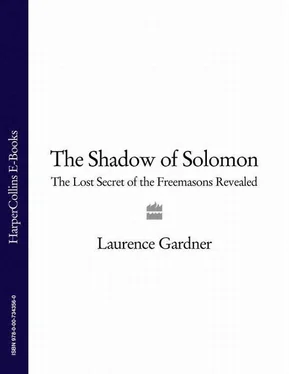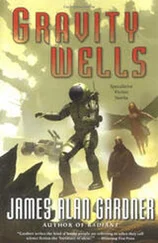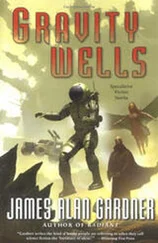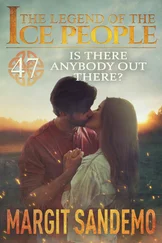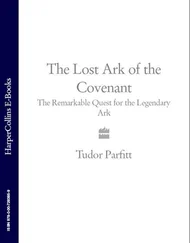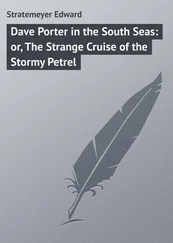At the departure of George, Lord Ripon, United Grand Lodge realized another splendid coup in December 1874 when, Albert Edward, Prince of Wales (later King Edward VII), accepted the nomination as Grand Master. This added particular weight to the Masonic Charge after initiation:
Ancient no doubt it is, having subsisted from time immemorial. In every age, monarchs have been promoters of the Art, 12have not thought it derogatory to their dignity to exchange the sceptre for the trowel, have participated in our mysteries and joined in our assemblies.
Electing to resign his office on his accession to the throne in 1901, Edward remained Protector of the Order, 13but during his 26-year term he took Freemasonry to a new level of international prominence. This was particularly the case on the occasion of his mother Queen Victoria’s golden jubilee. To celebrate this event, and also to make the point to Grand Lodges abroad that Imperial Britain still held a form of masonic sovereignty, Edward convened a special Jubilee Grand Lodge in 1897, with his brother Arthur (Duke of Connaught) and his son Albert (Duke of Clarence) in attendance ( see plate 14).
A few years earlier, steps had been taken to clear the field of any potential opposition from supporters of the Royal House of Stuart, which had been responsible for the dissemination of traditional Scots ( Ecossais ) Freemasonry in France and other parts of Europe from 1688. Even from as late as 1733, some while after the foundation of premier Grand Lodge, there are records of Ecossais high degrees and Scots Masters at the Devil’s Tavern lodge, Temple Bar, in London. 14And, perhaps surprisingly for the Victorian era, the Jacobite Cycle of the White Rose ( see page 81) had been revived in 1886 by Bertram, 5th Earl of Ashburnham. His colleagues in this were Melville Henri Massue, 9th Marquis de Ruvigny, along with the Celtic language authority Henry Jenner FSA, the writer and press correspondent Herbert Vivian, and the Hon Stuart Erskine.
The Jacobite Peerage, compiled by Melville de Ruvigny, relates that in the autumn of 1886, a select number of prominent people were sent elaborately sealed pamphlets from the White Rose (a traditional emblem of James II, Duke of York) marked ‘Private and Confidential’. 15The communication reads as follows:
For a long time past, it has seemed desirable that some efforts should be made to bring together those who, by hereditary descent or community of sentiment, are in sympathetic accord on the subject of history and the misfortunes of the Royal House of Stuart. It is now close to two-hundred years since the Revolution of 1688 dispossessed that House from the Throne of Great Britain. The chivalrous devotion of so many Englishmen and Scotsmen to that House, which they regarded as their lawful Sovereign, has never received a fitting tribute of respect and honour from those who, with an affectionate intensity, admire and reverence the disinterested loyalty of the noble men and women who freely gave up life and fortune for a Sacred Cause.
This approach by mail gave rise to a number of supportive replies, and plans were made for a grand Stuart Exhibition in London. Relics and relevant documents arrived from all over Britain, and arrangements were made to hold the display at the New Gallery in 1889 to mark the bicentenary of Stuart exile. By 1887, plans were under way, and two years later the Exhibition took place—but it was not sponsored by the White Rose as originally planned. Instead, by way of a strategic manoeuvre of the Imperial court, the patronage was taken over by Queen Victoria herself. Notwithstanding Lord Ashburnham’s leadership of the White Rose, the Queen appointed him president of the display, but retained her own control by excluding Ruvigny, Erskine, Vivian and Jenner. This was particularly hard on Henry Jenner who, as Keeper of Manuscripts at the British Museum, had been responsible for the Exhibition’s manuscript collection, much of which was never seen again by the respective owners.
Aided in France by Marie, dowager Countess of Caithness, plans had been made by Anne, Duchess of Roxburghe (Mistress of Robes for the Queen), and others to organize a coinciding event in Scotland. Charles Benedict Stuart, 4th Count of Albany in descent from Prince Charles Edward, was invited to attend from Italy, but was found dead soon afterwards. The circumstances were suspicious, and there was a common belief that he had been murdered. 16Charles had supposedly fallen from his horse, but Father Torquato Armellini (Postulator of the Jesuits in Rome) maintained that his demise was in no way consistent with the presumed fall. In fact, the post-mortem examination revealed that Charles had died from suffocation. 17
The 1904-21 Jacobite Peerage relates that the Stuart documents which disappeared after the Exhibition were not the only such papers to go missing in the Hanoverian era. In 1817 (during the reign of King George III), a Dr Robert Watson purchased a collection of manuscripts concerning the Stuart dynasty. He bought them in Rome, where they had been the property of Cardinal Henry Stuart, the younger brother of Bonnie Prince Charlie. Watson paid £23.00 sterling (equivalent to about £1,000 today), and prepared to publish the contents, but the files were seized and taken to London. Some time later, he received an ex gratia payment from Westminster for having been deprived of his property. Not content with this, he pursued his right to the collection—but he too was found mysteriously dead (supposedly having committed suicide) in 1838. The papers have never since appeared in the public domain, and their whereabouts remain a matter of conjecture.
Subsequent to the Exhibition fiasco, Ruvigny, Vivian and Erskine founded the Legitimist Jacobite League of Great Britain and Ireland. In 1892, they attempted to lay a wreath at the Charing Cross statue of King Charles I in London, but were again blocked by Queen Victoria, who sent ‘a considerable detachment of police’ to obstruct the ceremony. In the wake of this, Herbert Vivian spent much of his time abroad as foreign news correspondent for the Morning Post, the Daily Telegraph and the Daily Express. Henry Jenner, a constant protagonist of the Celtic realms, wrote his noted Handbook of the Cornish Language, and became a Bard of the Breton Gorsedd, promoting the culture and arts of Brittany . Lord Ashburnham and the Marquis de Ruvigny also departed from the political stage to direct their future interests towards chivalric endeavours. In 1908, Ruvigny became Grand Master of the Stuart Order of the Realm of Sion—a continuation of Scotland’s Order of the Thistle (equivalent to England’s Order of the Garter) whose title had been usurped by the English Crown. This international organization later merged with its allies, the Knights Protectors of the Sacred Sepulchre, and the Order of the Sangréal (Holy Grail)—a long-standing dynastic Order of the Royal House of Stuart, founded in 1689. 18
The reign of Queen Victoria, Regina et Imperatrix, saw an amazing boom in masonic interest. In London, the number of lodges increased from 100 to 382, and the provinces showed a commensurate increase. On a global scale, English lodges numbered 2,543 throughout the British Empire by the end of the 19th century. 19Clubs and Societies multiplied considerably within Victorian middle-class society, and Freemasonry was by far the largest and most influential of these in a period when imposing masonic halls and opulent lodges were built in a number of major centres. Although not at the Jubilee Grand Lodge with Edward, Arthur and Albert in 1897, Prince Edward’s younger brother Leopold (who had died shortly before) was also a Freemason, and the Craft had become a truly royal institution. Throughout the land, masons, by definition, achieved a celebrity status, opening churches, theatres and pavilions, and Freemasonry, with openly paraded regalia, became a focus of public ceremony. The foundation stone for the Shakespeare Memorial Theatre at Stratford-on-Avon was laid with full masonic honours by William, Lord Leigh, Provincial Grand Master of Warwickshire, in 1877. 20Similar events were held to establish Truro Cathedral in 1880, and the York Institute in 1883. 21Truro was the first cathedral to be consecrated in England since the 16th-century Protestant Reformation, and Prince Edward’s laying of the foundation stone led to other masonic cathedral foundations at Rochester, Peterborough and Liverpool.
Читать дальше
